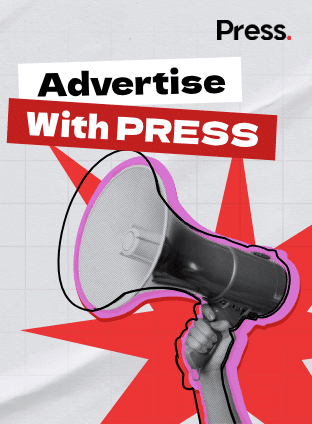Key Takeaways
- Keyword difficulty measures how hard it is to rank for a keyword on Google.
- Malaysian SMEs should prioritise low-to-medium KD keywords for faster visibility.
- Tools like SEMrush, Ahrefs, and Ubersuggest reveal competition levels.
- High KD keywords demand stronger backlinks and topical authority.
- Balance KD with intent, conversion potential, and ROI before deciding.
Table of Contents
ToggleKeyword Difficulty Matters
In 2025, Malaysia’s digital marketplace is more competitive than ever. SMEs now face established brands, AI-optimised content, and algorithmic ranking systems that reward authority over volume. Understanding KD lets business owners plan smarter, focusing on achievable terms that bring traffic and conversions instead of chasing impossible rankings.
If you’ve ever wondered why your site isn’t ranking despite publishing good content, the answer often lies in keyword selection, not quality alone.
What Is Keyword Difficulty?
Keyword difficulty measures how challenging it is to achieve a first-page ranking for a particular search term. Most SEO tools display it as a score from 0 to 100. A lower number suggests easier competition; a higher number means the keyword is dominated by authoritative sites.
SEMrush, Ahrefs, and Moz each have their own KD formulas. Typically, the score factors in backlink strength, referring domains, domain authority, and the content relevance of the top-ranking pages. (Source: SEMrush Blog; Ahrefs)
For example, a keyword like “digital marketing Malaysia” might have a KD of 78 (high difficulty), while “digital marketing tips for small business Malaysia” might score 36 (medium difficulty). The second term is easier to rank for yet still brings targeted visitors.
Why Keyword Difficulty Is Important for Malaysian SMEs
Smart keyword planning saves time and money. For many small businesses in Malaysia, SEO budgets are limited. Chasing high-competition keywords can drain months of effort with little reward. Instead, KD helps you prioritise terms that strike a balance between visibility and feasibility.
Read More: Local SEO: Why Malaysian Businesses Can’t Ignore It
Here’s why it matters:
- Cost Efficiency: Focus your SEO investment on achievable keywords.
- Faster Wins: Build traffic momentum with easier, long-tail terms.
- Scalability: As your site gains authority, you can target tougher keywords later. (Source: HubSpot 2024 SEO Trends Report)
In short, KD lets SMEs plan growth strategically rather than guessing which keywords might work.
How Keyword Difficulty Is Calculated
Each keyword difficulty checker uses slightly different metrics, but the underlying logic is consistent. You need to analyse how strong the competition is on page one of Google.
Factor | What It Means | Impact on KD |
Backlinks | Total and quality of referring domains to top-ranking pages | More backlinks = higher difficulty |
Domain Authority | Strength and trust of competing sites | High DA = harder to outrank |
Search Volume | Number of monthly searches for the keyword | Higher volume = usually higher KD |
SERP Features | Elements like featured snippets or local packs | Reduce organic space, increase KD |
Content Match | Relevance of current top results | Perfect match = harder competition |
Branded Queries | Keywords with brand names | Extremely high KD unless you are that brand |
(Source: SEMrush; Backlinko; Ahrefs)
Example:
If “courier service Malaysia” has top results from J&T, Pos Laju, and EasyParcel (all with thousands of backlinks), that keyword will have a KD above 70. A smaller courier startup might instead try to target “affordable same-day delivery KL” (KD around 32).
Read More: Comparing 3 Main SEO Types: On-Page, Off-Page, and Technical
How to Check Keyword Difficulty
1. Use a Keyword Difficulty Checker
Tools like SEMrush Keyword Overview, Ahrefs Keywords Explorer, or Ubersuggest show KD, search volume, and related phrases. Here are some examples:
- “digital marketing Malaysia” → KD 78
- “digital marketing agency KL” → KD 43
- “SEO consultant Johor Bahru” → KD 29
2. Filter by Intent and Location
Combine KD filters with search intent (informational, transactional, or navigational) and local modifiers such as “in Malaysia” or “near me.”
3. Study the SERP (Search Engine Results Page)
Manually check who ranks. If page one is filled with government portals or multinational corporations, choose an easier alternative.
4. Evaluate Related Keywords
Most tools offer “Keyword Variations” and “Questions” tabs that reveal easier opportunities (for instance, “how to hire SEO agency Malaysia”). (Source: Neil Patel Blog; SEMrush Academy)
How to Choose the Right Keyword Difficulty Range
The “ideal” KD range depends on a variety of factors, including your website’s age, domain authority, and resources.
Business Type | Recommended KD Range | Example Keywords |
New/Small SME Websites | 0–35 | “best courier Malaysia 2025”, “cheap audit services KL” |
Growing Mid-Level Brands | 36–60 | “digital marketing Malaysia”, “accounting software Malaysia” |
Established High-Authority Sites | 61–85+ | “insurance Malaysia”, “property developer Malaysia” |
(Source: SEMrush State of Search 2024 Report)
Try to maintain a balanced portfolio, with roughly 70% of low-KD keywords for steady traffic and 30% of high-KD terms for long-term authority.
Read More: Adapting to AI SEO in 2026: A Malaysian SME Guide
Beyond KD: Other Ranking Factors to Consider
Keyword difficulty should never be used in isolation. Ranking success depends on a combination of metrics that shape your content’s performance.
Complement KD with:
- Search Intent: Ensure content matches user goals (e.g., buying, learning, comparing).
- Topical Relevance: Focus on keywords that align with your products or expertise.
- SERP Layout: If the results are dominated by ads or AI snippets, adjust expectations.
- Conversion Potential: Pick terms that attract likely customers, not just visitors. (Source: Google Search Central)
For example, “How to register SST in Malaysia” might bring many readers but few buyers to your SST filing website, whereas “SST filing service Malaysia” targets decision-ready users.
Common Mistakes and Pitfalls to Avoid
Even experienced marketers make mistakes when it comes to keywords and keyword difficulty scores. Below are frequent errors Malaysian SMEs make, and how to avoid them.
1. Treating KD as the Only Metric That Matters
Many businesses rely solely on KD to pick keywords. However, KD doesn’t show profitability or conversion intent. Always cross-check KD with traffic quality and business relevance.
2. Ignoring Search Intent
A keyword may look easy (KD 25), but if its intent doesn’t match your offer, it won’t convert. Example: ranking for “how to start a business” won’t help an accounting firm sell audit services.
3. Targeting Only High-Volume Keywords
High search volume often means high difficulty. Long-tail terms may have fewer searches but much higher conversion rates.
4. Overlooking Localisation
Many Malaysian SMEs forget to localise. Adding city names or regional modifiers (“in Johor,” “near Bukit Jalil”) lowers KD and improves relevance.
5. Copying Competitors Blindly
Ranking competitors might have stronger domain authority or years of backlinks. Instead of duplicating their keywords, analyse gaps they haven’t covered.
6. Not Reviewing KD Regularly
KD changes over time as more competitors enter the market. Re-check your core keywords quarterly to stay ahead.
7. Ignoring SERP Features
If Google displays featured snippets or AI summaries, fewer organic clicks may be available. Optimise for featured snippets (short, direct answers) to reclaim visibility.
Read More: SEO Ranking: Comparing 5 AI Tools That Boost Malaysian Businesses
Practical Example for Malaysian Businesses
Suppose you own an accounting firm in Kuala Lumpur. Here’s what keyword research might look like:
Keyword | KD Score | Monthly Volume (MY) | Search Intent | Opportunity |
Accounting services | 78 | 3,200 | Transactional | Too competitive |
SME accounting services Malaysia | 42 | 900 | Transactional | Moderate competition |
Affordable accounting services KL | 28 | 350 | Transactional | Best entry keyword |
By targeting “affordable accounting services KL,” you can gain faster traction, higher visibility in local searches, and better ROI on your SEO budget. (Source: Rankpage Keyword Analysis Malaysia 2025)
How to Use Keyword Difficulty Strategically
- For new sites: build credibility through low-KD content first (tutorials, niche guides).
- For mid-level brands: focus on mid-range KD topics supported by internal linking.
- For established companies: challenge higher-KD, high-volume keywords with pillar content.
A smart strategy uses KD tiers like a staircase, where each win strengthens authority for the next level.
Conclusion: Start Easy, Grow Strong
Keyword difficulty is more than a number, it’s a compass for smarter SEO. By understanding how KD works, Malaysian SMEs can allocate resources strategically, chase realistic goals, and compound growth over time. Start with easier, intent-driven keywords, publish useful content, earn backlinks, and scale toward competitive topics as authority builds.
In Malaysia’s 2025 SEO landscape, the winners aren’t those who target the hardest keywords— they’re those who pick battles they can win consistently. Regardless of whether your SME handles its own SEO, or if it relies on the services of a reliable PR agency, it’s important to know what you’re doing to keep ahead of the competition.
Frequently Asked Questions About Keyword Difficulty
What Is Keyword Difficulty In SEO?
It’s a score showing how hard it is to rank for a specific keyword based on competition, backlinks, and domain strength.
How Do I Check Keyword Difficulty For Free?
Try free tools like Ubersuggest or limited versions of SEMrush and Ahrefs to see KD scores and related keywords.
What’s A Good Keyword Difficulty For New Businesses?
For SMEs with new websites, aim for KD between 20 and 40 for quicker ranking potential.
Does High KD Always Mean Better Traffic?
Not necessarily. High KD keywords may have more searches but often attract tougher competition and slower ROI.
How Often Should I Recheck Keyword Difficulty?
Re-evaluate every three to six months since new content and backlinks can change competitiveness.
Which Keyword Difficulty Tool Is Most Accurate?
SEMrush and Ahrefs are industry benchmarks, but comparing across multiple tools gives a clearer picture.


